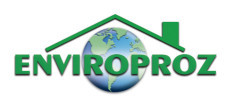The Basics of Mold: Understanding Mold Growth, Types, and Common Misconceptions
Mold is a type of fungus that plays a crucial role in the ecosystem by breaking down organic matter. However, when mold grows indoors, it can pose serious health risks and damage to property. Understanding the basics of mold, including its growth, types, and common misconceptions, is essential for homeowners and property managers.
Mold Growth
Mold thrives in moist environments and can grow on virtually any surface, including wood, paper, carpet, and food. It spreads through the release of spores into the air, which can then land on other surfaces and begin new growth. Common sources of moisture that can lead to mold growth indoors include leaks, high humidity levels, and inadequate ventilation.
Types of Mold
There are thousands of different types of mold, but some are more common indoors than others. These include:
- Cladosporium: Often found on fabrics and wood surfaces.
- Penicillium: Commonly found on wallpaper, carpet, and in air ducts.
- Aspergillus: Can grow on dust, paints, and building materials.
- Stachybotrys chartarum (black mold): Known for its dark green or black appearance and often grows on materials with high cellulose content, such as drywall and wood.
Common Misconceptions
Despite the prevalence of mold in indoor environments, there are several common misconceptions about mold that need to be addressed:
- Mold is only a problem in older homes: Mold can grow in any building, regardless of age, as long as the conditions are right.
- Bleach kills mold: While bleach can help remove mold from non-porous surfaces, it does not effectively kill mold on porous surfaces like wood or drywall.
- Mold is harmless: Certain types of mold, such as black mold, can produce mycotoxins that can cause health problems in humans.
In conclusion, understanding the basics of mold growth, types, and common misconceptions is crucial for maintaining a healthy indoor environment. By taking proactive measures to prevent mold growth and addressing any mold issues promptly, homeowners and property managers can protect their health and property.
Disclaimer:
The information provided in these articles is for educational and informational purposes only. It is not intended to be a substitute for professional advice, diagnosis, or treatment. Always seek the advice of your physician, veterinarian, or other qualified health provider with any questions you may have regarding a medical condition or the health and well-being of your pets.
The authors and the website do not endorse any specific products, services, or treatments mentioned in these articles. Reliance on any information provided in these articles is solely at your own risk. The authors and the website shall not be liable for any loss, injury, or damage arising from the use of or reliance on the information provided.
